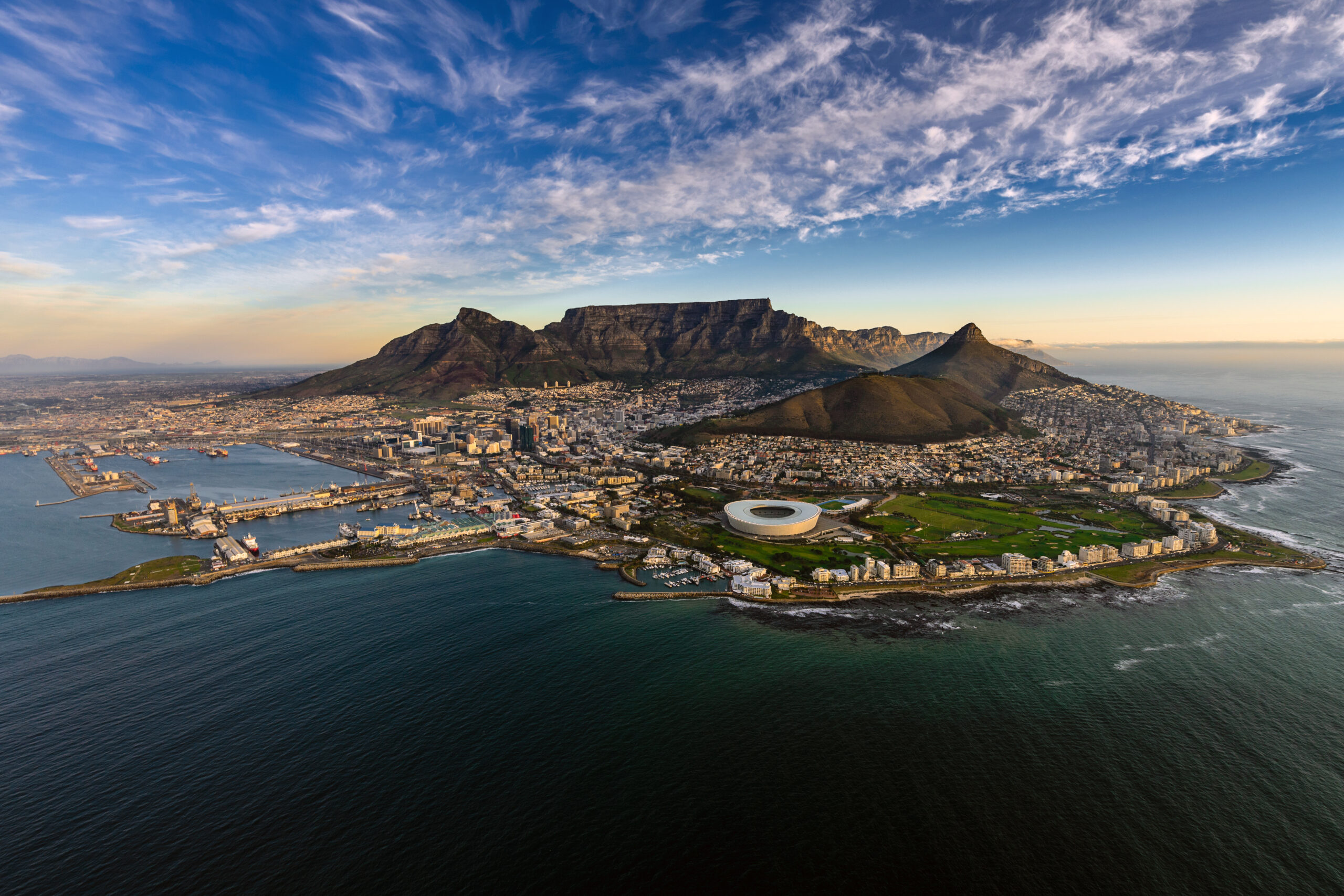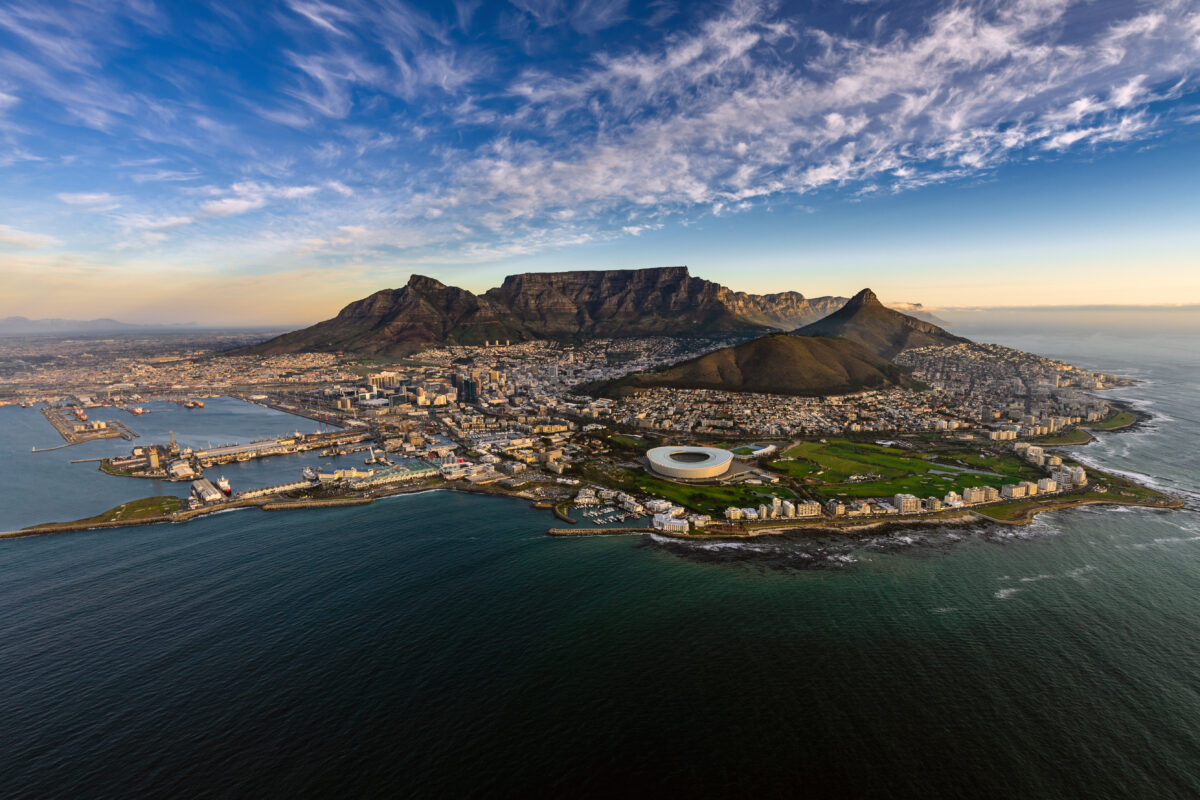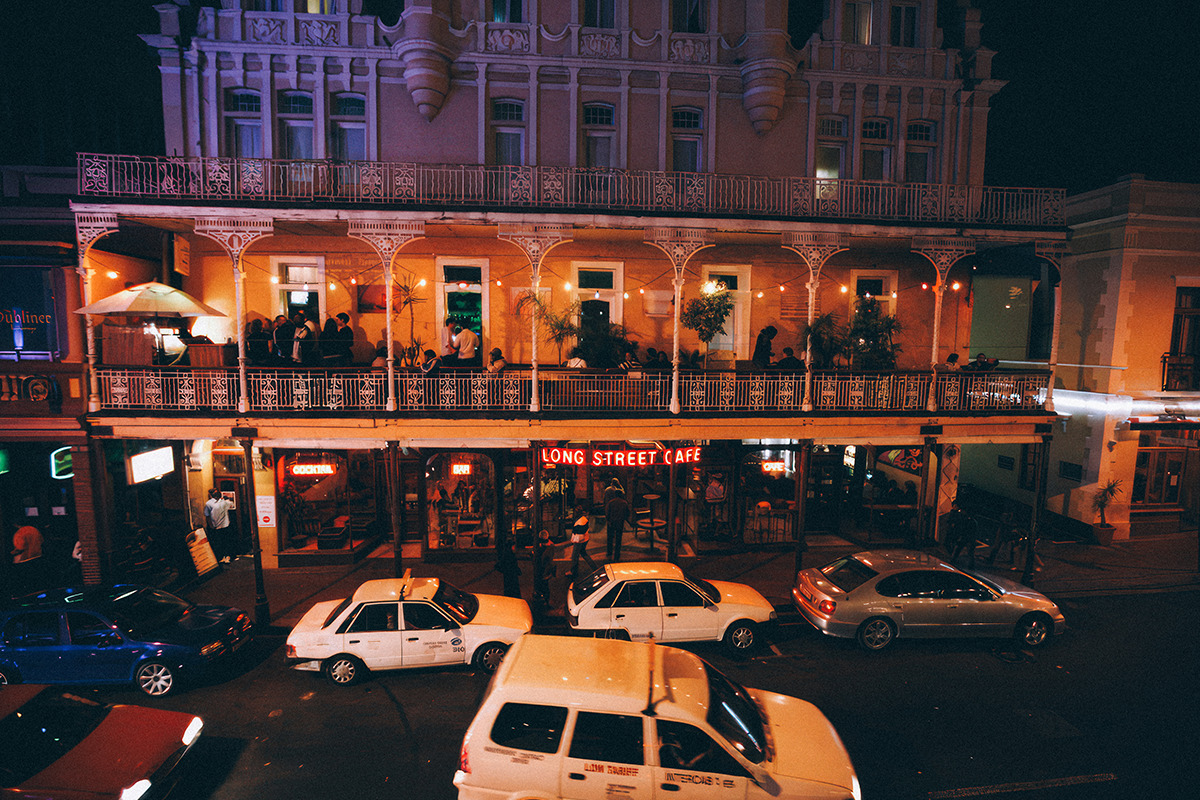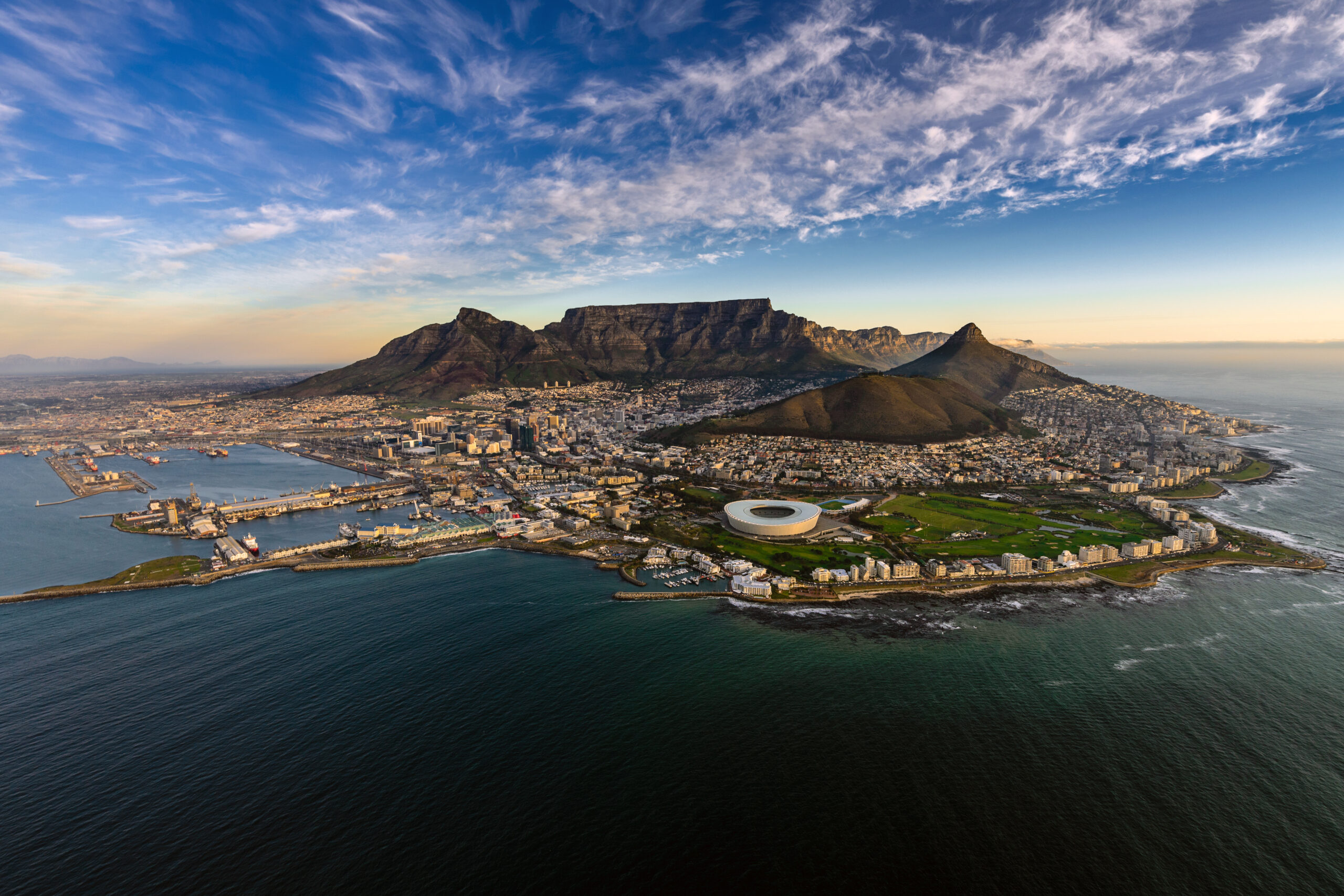


Cape Town—South Africa’s Mother City—is way more than epic views, towering mountains, and irresistibly cold water (yes, it’s freezing, but we’re obsessed). Ranked among the best cities in the world and pulling tourists all year round (seriously, every season is tourist season in Cape Town), this city’s history runs deep. It’s a place where oppression gave way to reconciliation, where prisons became museums, and where entire neighbourhoods burst into colour as a symbol of freedom. Oh, and let’s not forget the world-famous flat-topped mountain that just refuses to be pointy!
Jan van Riebeeck, South Africa’s first Dutch settler, didn’t exactly land in Cape Town to start the next big thing. Nope, the city began as a pit stop – a sort of drive-thru (or “garage” as South Africans would call it) for ships heading to India. At first, it had the super charming name of “Cape of Storms” because the Atlantic Ocean wasn’t exactly rolling out the welcome mat. The first voyager to the Cape, Bartholomeu Dias and his crew of voyagers got tossed around so much that they almost lost hope in establishing the route. But once the rough seas were behind them and they caught sight of the lush land and those jaw-dropping mountains, the mood changed. Suddenly, it was all about hope and peace, so they rebranded it to the Cape of Good Hope.
Here are some surprisingly interesting answers about Cape Town’s top attractions – guaranteed to surprise even the locals!
Why is Table Mountain flat?

If you thought Table Mountain was just another glorified hill, think again. This mountain towers over the city at 3,558 feet, flaunts a perfectly flat top and even rocks a “tablecloth” on cloudy days (because why not wear clouds like a fancy drape?). Fun fact: what we now call the top of Table Mountain was once a seabed, submerged under the waves. Over 450 million years ago, tectonic movements decided to lift it up, and erosion took over, carving out its iconic flat shape. The mountain used to be taller, but wind, water, and ice chipped away at the softer rocks, leaving behind the solid sandstone you see today. A true definition of “started from the bottom, now we’re here”. So, why is Table Mountain flat? Millions of years of erosion. Cool, right? Now you know.
The Khoisan, the indigenous people of the Cape, may not have had a geology lesson, but they sure nailed it with the name “Huriǂoaxa” (pronounced Hoerikwaggo), meaning “the sea-emerging mountain.” They were onto something!
Why are there colourful houses in Cape Town?

Built before Instagram aesthetics became a thing, the Bo-Kaap houses are so much more than a stunning backdrop of mesmerising colour. They are built with tear-stained blocks of history and resilience that turned the ordinary into vivid hues of freedom. Once a segregated area, Bo-Kaap became home to the free descendants of Cape Malay slaves. Originally, the houses were painted plain white, but in a bold expression of newfound freedom, residents picked up their brushes and painted the town, quite literally. As brush bristles kissed concrete walls, a visual representation of Mandela’s rainbow nation was birthed.
Beyond the vivid colours, Bo-Kaap holds its place in history as one of South Africa’s oldest neighbourhoods, boasting the Auwal Mosque, built in 1794, the oldest in the country. Even the Bo-Kaap Museum, housed in a building dating back to the 1760s, stands as one of South Africa’s oldest surviving structures. So, visiting Bo-Kaap isn’t just about admiring a colour palette come to life – it’s about diving into a rich tapestry of culture, history, and freedom.
What is the history of the Noon Gun?

One of Cape Town’s oldest – and loudest – traditions is the famous noon gun, a blast older than the Eiffel Tower and Vincent Van Gogh’s Starry Night. These black powder Dutch naval cannons, first fired in 1806, were originally used as a time signal for ships anchored on the bay, helping them recalibrate their maritime chronometers. They also aided in the city’s defence system, warding off potential navy attacks. While they no longer help with navigation, they still pack a punch at noon, sending a thunderous boom across the city every day, except Sundays and public holidays, of course! We wouldn’t want to ruin your well-deserved sleep-in on your day off.
Initially stationed at the Castle of Good Hope, South Africa’s oldest surviving building, these cannons now sit proudly on Signal Hill. Talk about a transformation, what started as instruments of war have become peaceful timekeepers, marking noon peacefully and ceremonially. Here’s a fun tidbit: legend has it that the only time the gun fired before noon was in June 1895, when an unwitting 8-legged intruder, a spider, set it off. While other countries, like Canada, have similar traditions, Cape Town’s noon gun is recognised as the first of its kind, proof that even the loudest bang can have a peaceful purpose!
When was Robben Island built?

Just 7 kilometres (4.3 miles) off Cape Town’s west coast lies Robben Island, a spot that’s become world-famous but carries a rather infamous backstory. This wasn’t always South Africa’s hottest maximum security prison; in fact, since the 17th century, it’s served as a go-to location for banishment and seclusion long before it became a symbol of apartheid-era incarceration. So, don’t just expect dim-lit cells; the island has worn many hats over the years, from leper colony to mental asylum and even a WWII military base.
The prison itself was built in the 1960s, designed to hold political prisoners deemed too dangerous for the apartheid government. The name “Robben Island” comes from the Dutch word for seals; because, believe it or not, those cute-eyed creatures were once the main attraction in the surrounding waters.
While it’s famously known as the place where Nelson Mandela spent 18 of his 27 years in prison, he wasn’t the only one to experience the island’s ‘hospitality’. Other political prisoners, like Robert Sobukwe and former presidents Kgalema Motlanthe and Jacob Zuma, also had their fair share of Robben Island woes.
Declared a UNESCO World Heritage Site in 1999, the island now operates as a museum, showcasing its rich and complicated history as a symbol of resilience and the struggle against segregation. So, when you visit, remember: it’s not just a prison; it’s a monument to the fight for freedom, with a few unexpected twists along the way!
How long is Long Street?

Picture this: an explosion of 17th-century charm crashes into the vibrant activism of the 1980s, and voilà, Long Street emerges. With an eclectic bohemian vibe and Victorian buildings to match, this 3 km street has claimed fame worldwide as being the party epicentre of Cape Town. But beyond the disco lights and amapiano dances, the street has deep sonic waves of history revealing its past as a hub of economic activity, a melting pot of diversity that defiantly resisted oppressive governance and the street leading up to the greatest mountain on the southern tip of Africa. Decorated with upbeat nightclubs, art galleries, restaurants, theatres, cute coffee shops and souvenir stands this street offers a variety of activities any time of day or night.
Originally constructed in the 17th century as a convenient route connecting the city centre to the surrounding villages, Long Street quickly became a bustling artery of business and residence. As Cape Town grew and attracted more visitors, the diversity on Long Street blossomed.
Known for its mixture of cultures, one would have thought the emergence of the apartheid government would deter the Long Street community but defying the powers that be, the street remained mixed and inclusive till the force of the government could no longer be ignored. Although adhering to the laws at face value, the resistance was still very much alive on this street. It became a place for political gatherings and through artistic expression people protested the ruling government of the time. Several plays and music would have themes that opposed the government and day-to-day people still found a way to make humanity triumph over hate.
There is life in the Victorian walls of Long Street that echoes beyond the nightlife for which the street is known
What is the Castle of Good Hope?

Designed after the 5-point star fort style, Europe’s go-to fortress design of the 17th century; the Castle of Good Hope is the oldest surviving building in South Africa and quite the historical heavyweight. Construction kicked off in 1666 and wrapped up in 1679, under the commission of the Dutch East India Company, this was a reconstruction from the smaller structure built by Jan Van Riebeeck a few years earlier. This impressive structure was built to fend off any would-be invaders, and somehow, 345 years later, it’s still standing tall and proud.
Holding secrets darker than its stone walls, it was once the legislative hub of colonial rule, it housed slave dungeons and served as a backdrop for the imprisonment and torture of indigenous tribes (talk about a grim past). Being the judicial centre of Cape Town, it became a hotbed of drama as Dutch and English settlers clashed for its control. After a lot of back and forths, the English won it after the battle of Blaauwberg in 1806.
Now, the castle has traded its military past for museum status, serving as a monument to the country’s tumultuous history and the victories that followed. Walking through its 300-year-old walls is both humbling and awe-inspiring, a reminder of how far the country has come in the quest for peace, all while marvelling at some seriously impressive architecture! Just be careful not to bump into any ghosts of colonial governors or enslaved people. They might have a few things to say about the whole ‘peace and harmony’ thing. Just kidding, Ghosts are not real.
It’s more than just views!
Cape Town is a perfectly mixed cocktail of enthralling views and humbling history. As the South African national anthem eloquently puts it, ‘From our blue heavens to the depths of our sea over our everlasting mountains’, the city is a mashup of stories that scream “We survived!”. Which you will be shouting when you hike up Table Mountain with these hot travel deals. Just make sure you haven’t been skipping your leg day before you attempt the summit. If you are looking for a culturally rich experience with perfect views plus a dash of endless activities, then Cape Town is the city for you.
Please visit:
Our Sponsor
